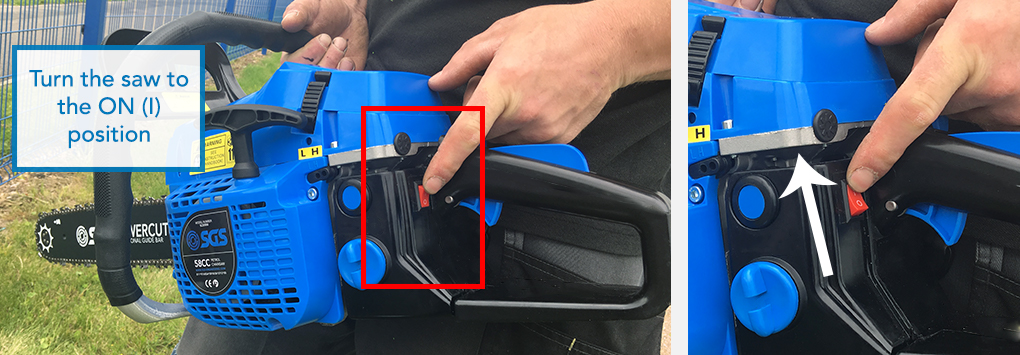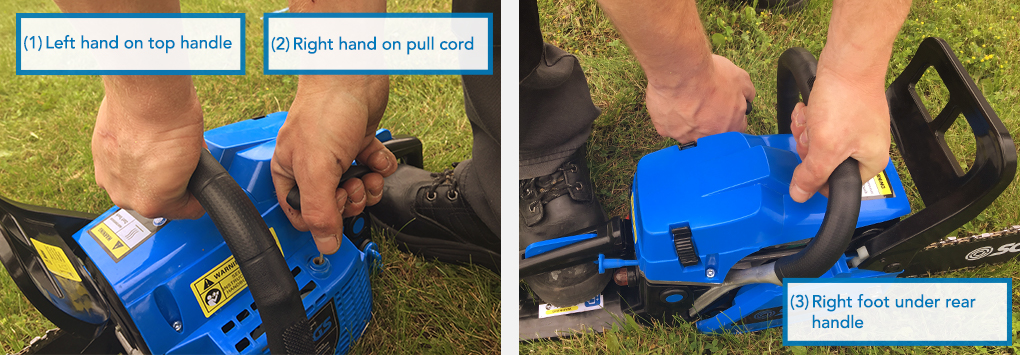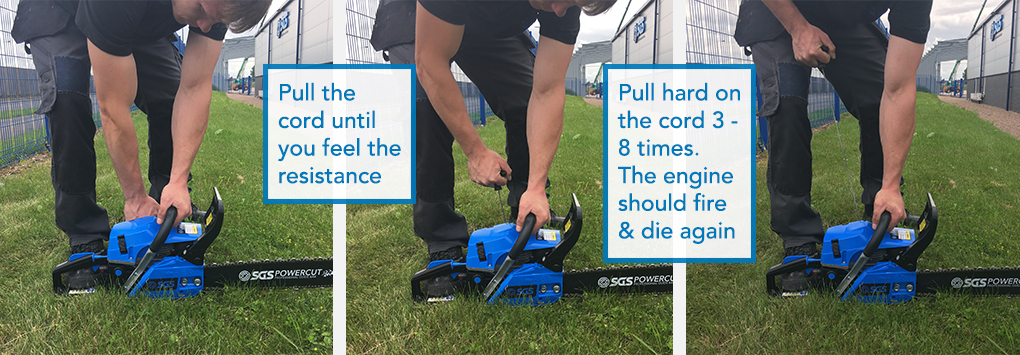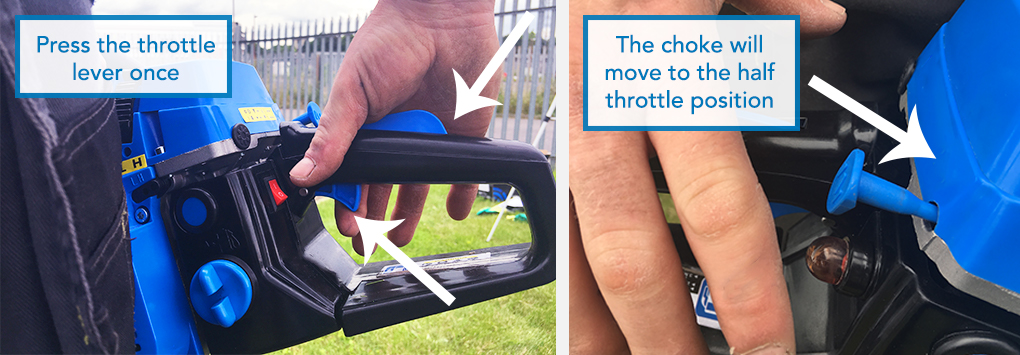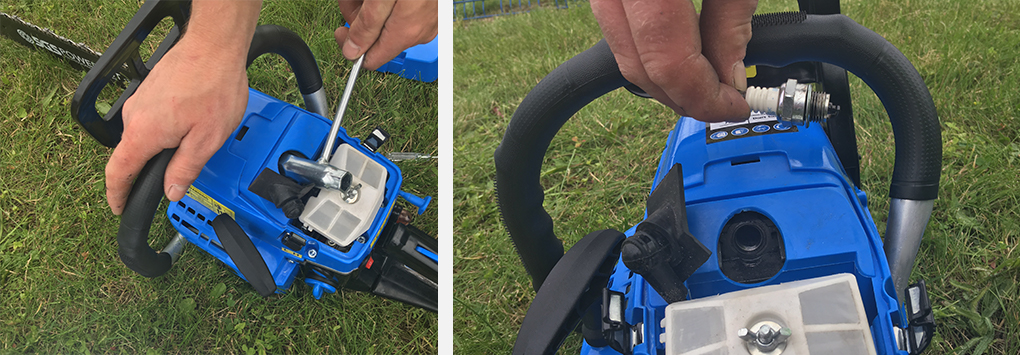Here at SGS we want to make garden power tools as accessible and easy to use as possible. If you’ve not worked with a 2-stoke petrol tool before, you're probably unfamiliar with the starting mechanism. When starting your tool for the first time it can be a little tricky if you don't follow the ideal starting method. In this guide we’ll go through the process step-by-step, so you can get tidying up the garden in no time at all.
This quick starting guide assumes you’ve successfully managed to set up and fuel your chainsaw, but if you’re looking for help with this, we have another helpful guide here:
1. Chain Brake & Scabbard
2. Prime with the fuel bulb
3. Switch the saw on
4. Pull the choke out
5. Lay the saw down
6. Hold the saw
7. Pull start
8. Apply throttle
9. Pull Start Again
10. Release the Chain Brake & Check the Oil
The chainsaw is now ready for you to use. Simply apply the throttle as required. Make sure you read through the safety information in the instruction manual before you start cutting anything.
Troubleshooting
If you chainsaw hasn't started by following the quick start guide above, there's a couple of things you need to check.
Checking the Fuel Mix
The most common problem with a chainsaw not starting is that there's a problem with the fuel mix. Double check that you've used 40 parts fresh unleaded petrol to 1 part 2-stroke oil (40:1). Check the petrol you've used isn't stale.
Adjusting the Carburettor
- Turn both the high and low adjustment screws all the way in (screw to the right) until they hit the bump stop.
- Unscrew (turn to the left) the L low adjustment screw 2 complete turns.
- Unscrew (turn to the left) the H high adjustment screw 1 and a half turns.
- Now start the machine with the choke off (the saw start in 3 – 5 pulls).
- If the idle seems high turn the T Screw slightly to the left whilst running to reduce idle speed – if the machine starts bucking around / making a imtermitant ringing noise or cuts out, the idle has been adjusted too low and will need to be turned up a little by turning the T screw to the right.
Check to see if the Engine is Flooded
There's a chance that if you've over used the pull start mechanism, you may have flooded the two stroke engine. This is very simply to check and fix.
- Remove the plug, dry it off and leave the saw for a few hours to dry.
- Replace the plug and follow the normal starting procedure.
Check You Chainsaw has a Spark
To find out whether the sparkplug of your chainsaw is producing a spark, follow these simple steps.
Remove the cover & expose the sparkplug
Remove the sparkplug
Check for a spark
Place the sparkplug back into the spark plug wire. Hold the boot end of the sparkplug wire with your hand and place the electrode tip against a metal surface.
Make sure your tool is switched on. Using your other hand (or with the help of another person) pull the starter cord quickly. If the ignition is working correctly you should see blue sparks where the plug is touching the metal surface. However if you can't see a spark then you need to contact our customer service team.
Still need help?
Our in house experts are always on hand for buying advice and to provide bespoke care, regardless of the application.
Call SGS on 01332 576 850 or fill out our contact form today.




